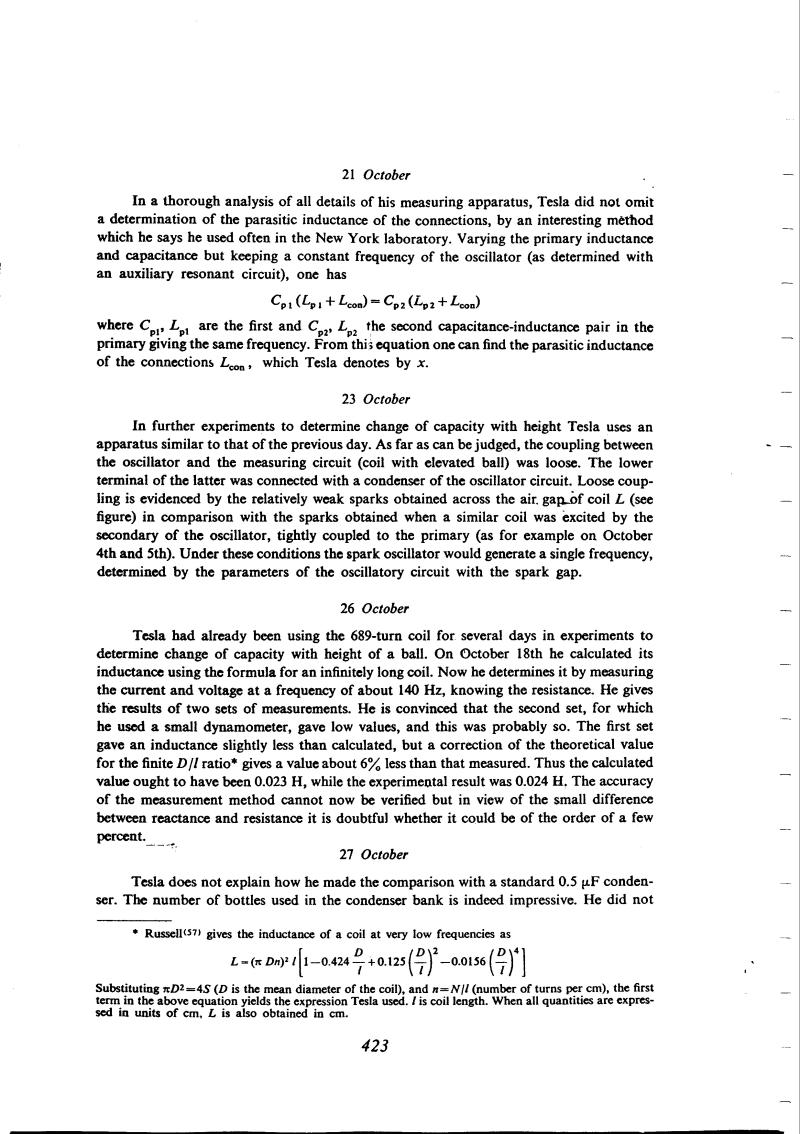
Nikola Tesla Books
Books written by or about Nikola Tesla
* Russell(57) gives the inductance of a coil at very low frequencies as
$! {L = (\pi D n)^{2} l \left[{1 - 0.424 {D \over I} + 0.125 \left({D \over I}\right)^{2} - 0.0156 \left({D \over I}\right)^{4}}\right]} $!
Substituting ÏD2 = 4S (D is the mean diameter of the coil), and n = N/l (number of turns per cm), the first term in the above equation yields the expression Tesla used. l is coil length. When all quantities are expressed in units of cm, L is also obtained in cm.
423
57
Russell A. âOn the magnetic field and inductance coefficients of circular cylindrical, and helical currentsâ, Phyl. Mag. April, 1907.

